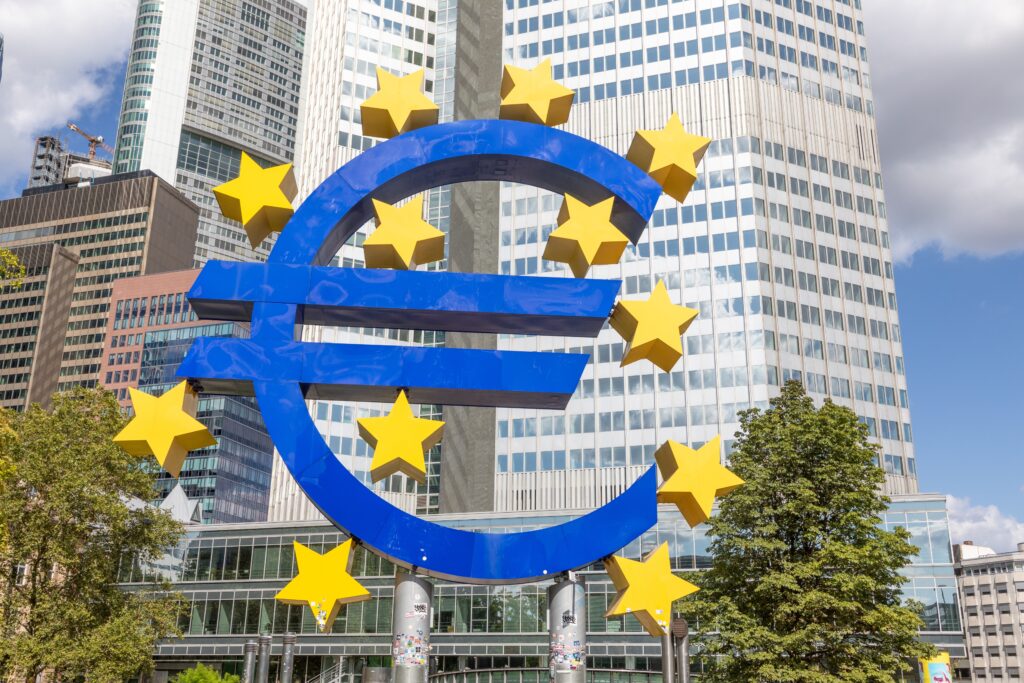In May 2025, the eurozone’s private sector unexpectedly shrank, signaling new concerns for the region’s economy. The latest Composite Purchasing Managers’ Index (PMI) fell to 49.5, down from 50.4 in April. A reading below 50 marks a decline in activity. Economists had predicted a slight rise to 50.7, making this the lowest figure since November 2024.
Services Sector Leads the Decline
The services industry saw its sharpest fall since January 2024. The Services PMI dropped to 48.9, slipping from April’s 50.1. That drop points to a significant slowdown in demand for services across the euro area.
Manufacturing saw a slight improvement. The Manufacturing PMI rose to 48.4 from 45.7 in April. Still, it remained in contraction territory.
Despite this small gain in factory output, overall business confidence fell. It marked the second straight monthly decline, hitting its lowest point since September 2022.
“Foreign demand is slowing, but local demand drags most,” said Cyrus de la Rubia, chief economist at Hamburg Commercial Bank.
Economists See Weak Domestic Demand
De la Rubia described the eurozone economy as “fragile.” He said the PMI figures have barely moved in recent months, showing that any progress has stalled. May’s data, he noted, shows a clear slide into contraction.
He dismissed recent U.S. tariffs on European goods as the cause of the slowdown. Instead, he suggested early purchases ahead of the tariff hikes may have actually helped industry in the short term.
While manufacturers increased production for the third month in a row, growth remains soft. New orders stabilized for the first time since April 2022, but weak local demand, especially in services, remains a major issue.
De la Rubia believes the European Central Bank (ECB) will keep cutting interest rates, but slowly. He pointed out that rising wages, not energy prices, now drive most of the cost pressure in services.
Germany and France Show Mixed Signals
Germany, the eurozone’s largest economy, saw another decline in business activity. The German Composite PMI dropped to 48.6, down from 50.1 in April. Manufacturing improved to 48.8, but the services index tumbled to 47.2.
“Manufacturing output rose for a third month,” said de la Rubia. “But the services slump dragged the whole economy down.”
He added that public investment in infrastructure and defense may offer support. Lower energy prices also give some relief to factories.
France, meanwhile, showed signs of weak but steady progress. The French Composite PMI rose to 48.0, up slightly from 47.8. Manufacturing reached 49.5 — its best reading since February 2023. But the services sector remained sluggish, stuck at 47.4.
Economist Jonas Feldhusen linked the country’s struggles to political instability and weak domestic demand.
“Manufacturing shows signs of life, but services keep falling,” Feldhusen said.
He noted that while output prices dropped, rising input costs continue to eat into business profits.
Markets React as Investors Watch ECB Moves
Despite the poor PMI results, the euro remained stable in foreign exchange markets. By Thursday morning, it traded at $1.1330, unchanged from the day before. Analysts say concerns over U.S. debt have supported demand for the euro.
In bond markets, German Bunds stayed flat. Yields on ten-year bonds held steady at 2.65%, while two-year yields dropped slightly to 1.83%. Investors expect the ECB to continue reducing rates over the coming months.
Eurozone stocks followed the mood from Wall Street. The Euro STOXX 50 dropped 1.4%, with losses across most sectors. Germany’s DAX and France’s CAC 40 both fell by 0.7%. Italy’s FTSE MIB lost 0.9%, and Spain’s IBEX 35 dropped 0.7%.
The eurozone economy remains stuck in a slow patch. While manufacturing shows some strength, services continue to hold back overall growth. With weak demand at home and rising labor costs, many businesses face tough months ahead.
The ECB is expected to continue cutting rates cautiously, but much will depend on whether local demand can bounce back.
